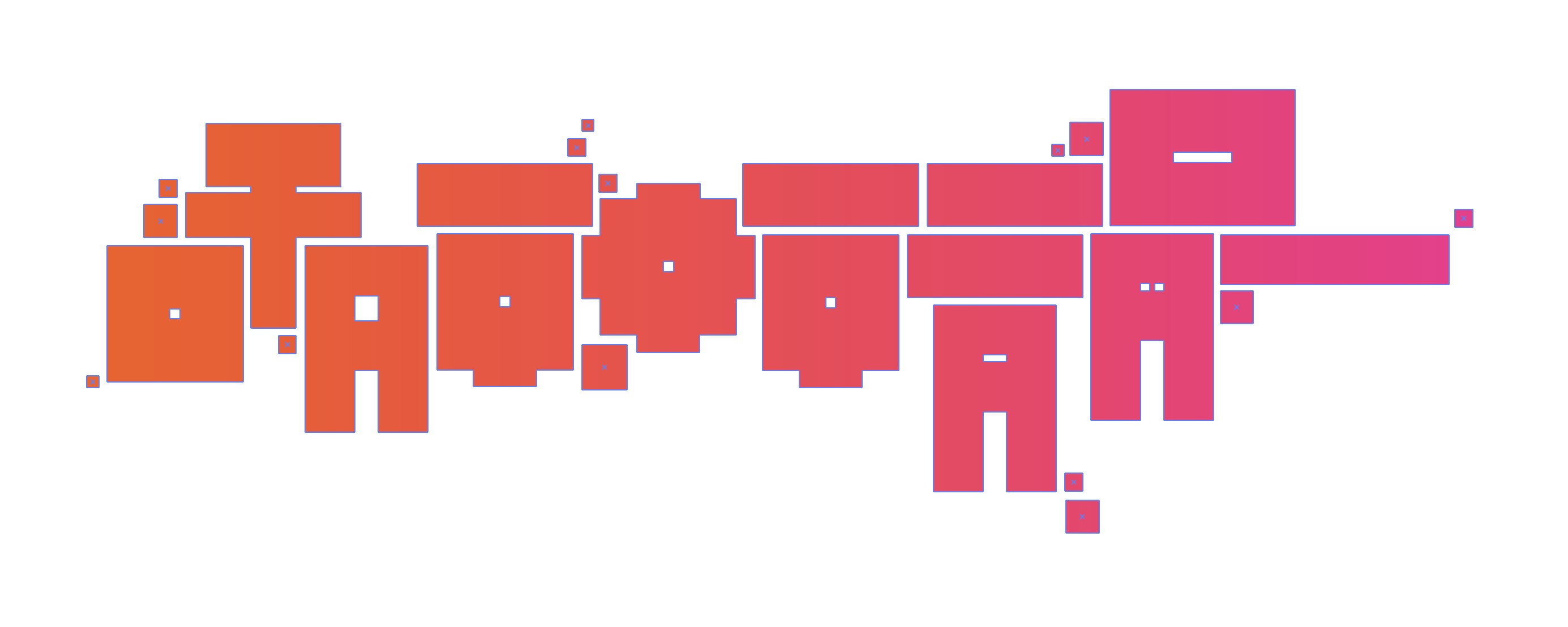
This implementation of arcologies has been abandonned. Development has been moved to norns.
Overview
- Organize cells on the field.
- Change a cell's structure between hive, gate, or shrine to define behavior.
- Open a cell's ports to create leylines.
- Signals emgerge from the ports of hives.
- Both gates and shrines route and split signals.
- When signals pass through shrines, a note plays.

Configuration
Add the device to a new midi track and add any instrument to the track. Synths are an easy way to always get some sounds going fast. Drum racks require more configuration to line up all the notes. The most advanced usage probably involves zoned intrument racks. See the demo set included in the download for examples.
The demo .als set was built with Live 10. It will not work with prior versions of Live (but arcologies should!).
arcologies was built for grid 128 but is lovingly compatible with 64 and 256. Just select your edition.

Concepts
| Term | Definition |
|---|---|
| Cells | The foundational building block of arcologies. Stationary structures on the grid. Cells have many attributes. |
| Ports | Each cell has four ports: north, east, south, west. Each port is either open or closed. |
| Structure | Each cell has one-and-only-one structure. There are three types: hive, gate, shrine. But cells can change structure. |
| Hive | Births signals at the rate of the metabolism. |
| Gate | Changes and splits the flow of signals. |
| Shrine | Just like gates, but also play notes. |
| Notes | Each cell has a note. (But only shrines actually play notes.) |
| Metabolism | Each cell has a metabolism. (But only hives actually use metabolisms.) |
| Signals | Travels between cells, typically on leylines. They make noise! |
| Leylines | Glowing line segments that connect cells or terminate at the field boundary. Leylines help you visualize your arcology. They have no further function. |
| The Field | This is your canvas. Your grid is now a field where cells live, leylines wind, and signals propagate. The field encapsulates everything except the quick menu. |
| The Quick Menu | The first column of your grid. For doing menu-y things. |
Said plainly, hives spit out signals. Signals travel in straight lines. If they hit a gate or a shrine, they change directions or split. If they hit a shrine, they play a note. You pick the note. You also pick the directions, and timings.
Cells
Cells are the building blocks of arcologies. Cells have four key components:
Ports
Ports direct the flow of signals. Each cell has four ports: north, east, south, west. Open ports allow signals in. Closed ports stop signals. Select a cell, then press adjacent keys to toggle ports on and off.
Hives emit signals from all open ports at a rate as defined by their metabolism. The default metabolism is 4. This means every fourth generation (or "beat") signals will be emitted.
Gates and shrines route incoming signals to every other open port. So if a gate or shrine only has one port open, any signal that enters will be destroyed. If a gate or shrine has two ports open, the signal will emerge from the other port. If a gate or shrine has three ports open, the signal will be split in two and emerge from the other two ports. Finally, if all four ports are open, the signal will emerge from all three other ports.
Structures
Each active cell has one structure. Structure is configured via in the quick menu. Newly activated cells default to whatever global structure is set. Hive is the default.
Hives
...send signals into the field via their ports.
Ports
...route and split signals.
Shrines
...route and split signals. Play notes.
Notes
Shrines play their note when a signal collides with them. arcologies supports the chromatic scale of C1 - F#5. Like metabolism, each cell has a note configured, though only shrines use notes.
Metabolism
Metabolism is the rate at which hives birth signals. Metabolism is synced with Live's playback. Like notes, each cell has a metabolism configured, though only hives use metabolism.
Consider an arcology in 4/4 time. This table illustrates the rates at which hives birth signals:
| Metabolism | Frequency | Notation |
|---|---|---|
| 6 (slowest) | Every 6 beats | Dotted whole note |
| 5 | Every 5 beats | Whole note tied with a quarter note |
| 4 | Every 4 beats | Whole note |
| 3 | Every 3 beats | Dotted half note |
| 2 | Every other beat | Half note |
| 1(fastest) | One per beat | Quarter note |
Signals
Signals are born from hives, routed and split by both gates and shrines, and play notes at shrines.
Signals have a position (x & y) and a direction (n, e, s, or w).
If a signal collides into a closed port, the signal disappears into silence (the poor little signal just smashed into a wall.) The same is true if it wanders off the field. The same is true if they collide with a hive. If a leyline disappears from beneath a signal, the signal will continue along. Perhaps you can help it will find its way again?
If two (or more) signals land at the same place at the same time -- either in the field or at a cell -- both will be destroyed. However, signals may "pass" through each other so long as they wouldn't land at the same cell on the same beat.
Leylines
Create leylines by opening ports. These help you visualize the signal flow of your arcology. Leylines can cross over each other without consequence.
The Field
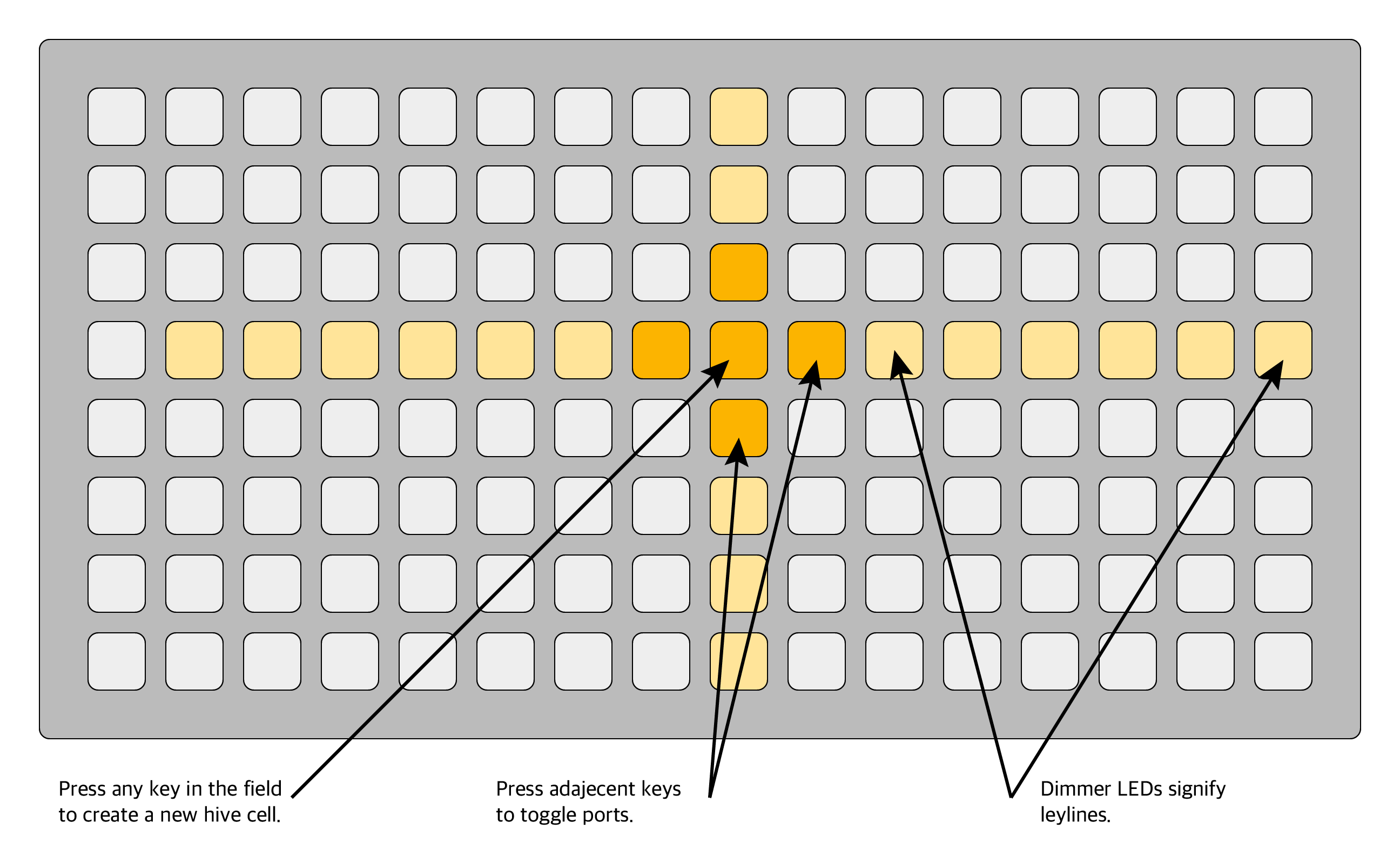
At the field's resting state, active cells (hives, ports, shrines) will be displayed with a single, brightly illuminated LED. Signals will be displayed as single, slightly dimmer LEDs, moving about. This is the only state where signal flow can be analyzed. One cell can be selected at a time. If a cell is selected, it will blink. Press any active cell to select it. Then press an empty cell to deselect. Press an empty key to create a cell.
The Quick Menu
The quick menu is always available. It occupies the first column of the grid. Most interactions involve a "long press" of one of the quick menu keys, plus pressing either a cell on the field or a second quick menu key.
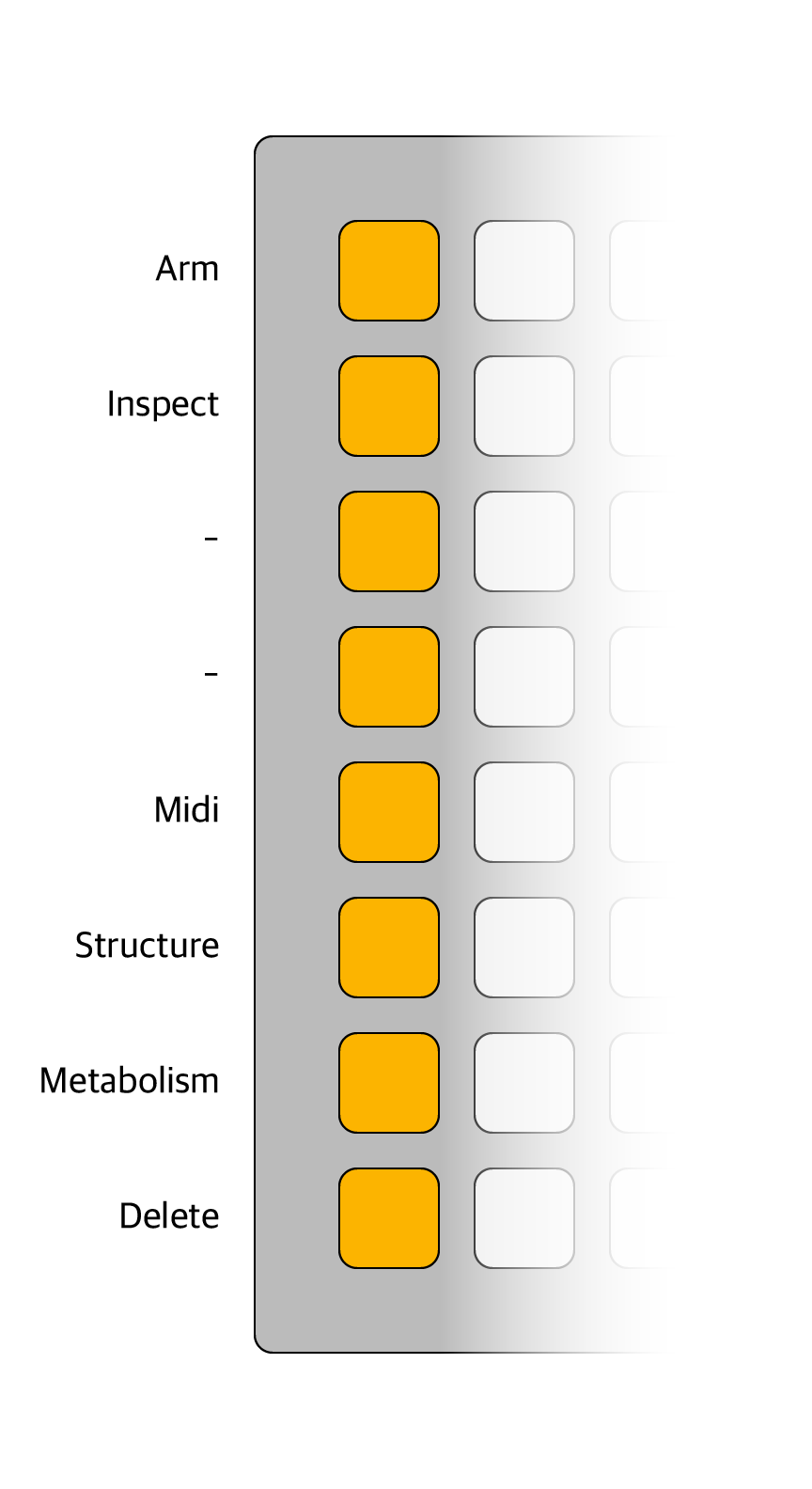
Inspect
Hold the inspect key plus any of the structure keys to view only those structures. This is useful for planning your arcology.
Release the inspect key to return to the normal view.
Note the inspect and structure keys use the same sub-menu layout.
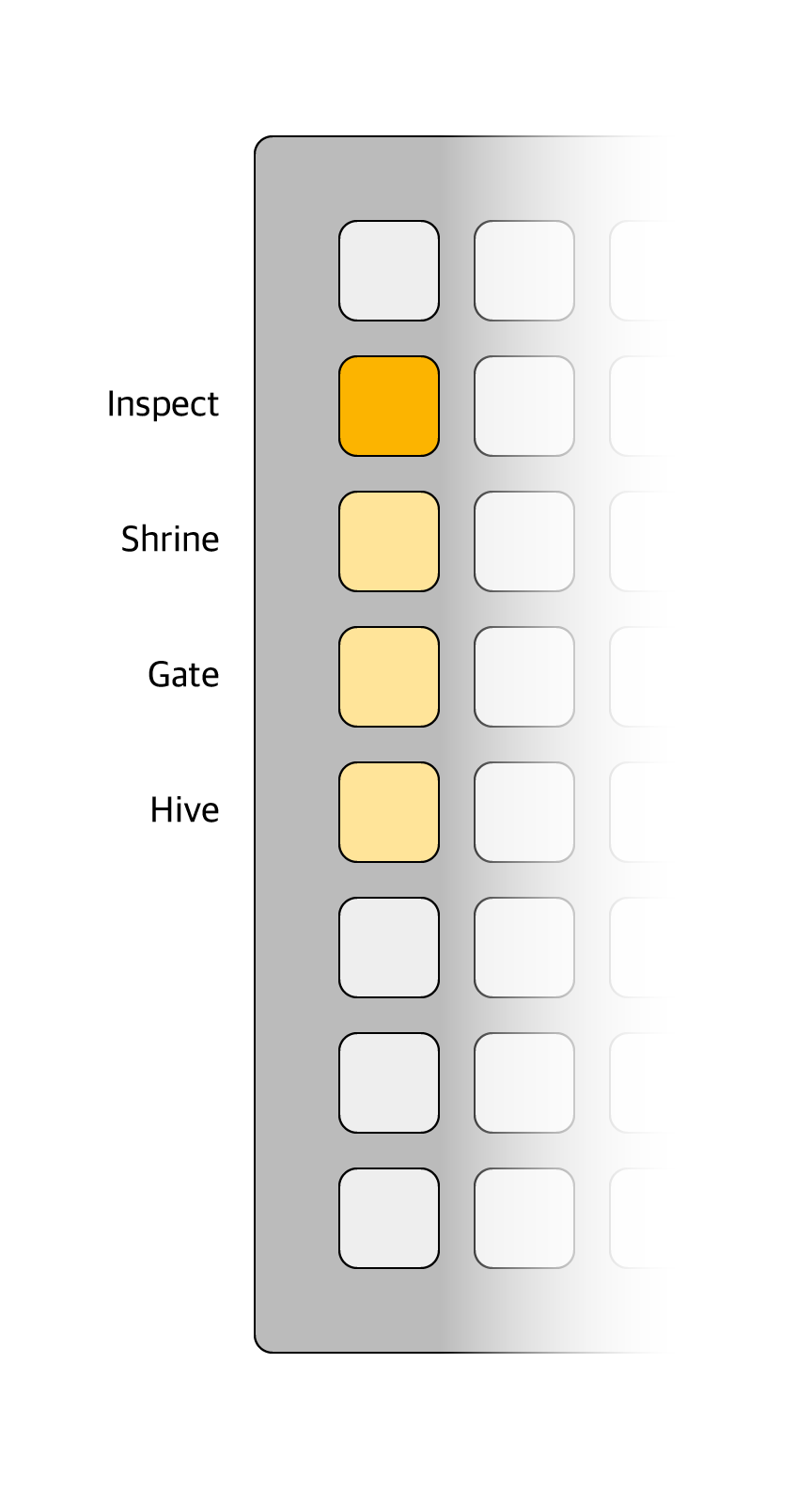
Midi
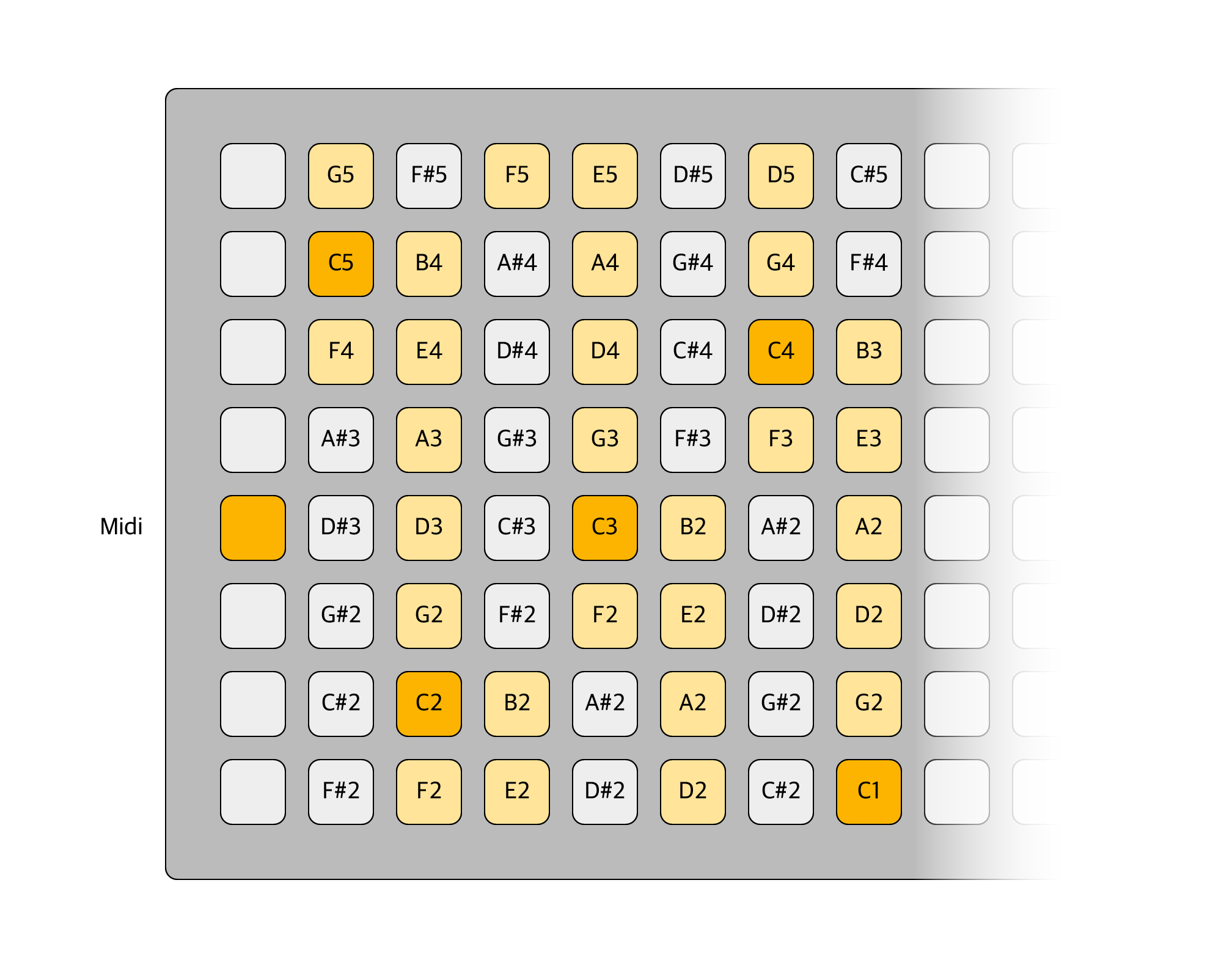
Hold the midi key to open the palette. The available notes are G5-C1. If a cell is selected, pressing any key will set the cell's note. If no cell is selected, pressing any key will set the global note. All newly created cells will default to this note.
Release the midi key to close the palette.
Structure
Hold the structure key plus hive, gate, or shrine keys. If a cell is selected, this will set the cell's structure. If no cell is selected, this will set the global structure. All newly created cells will default to this structure.
Release the structure key to return to the normal view.
Note the inspect and structure keys use the same sub-menu layout.
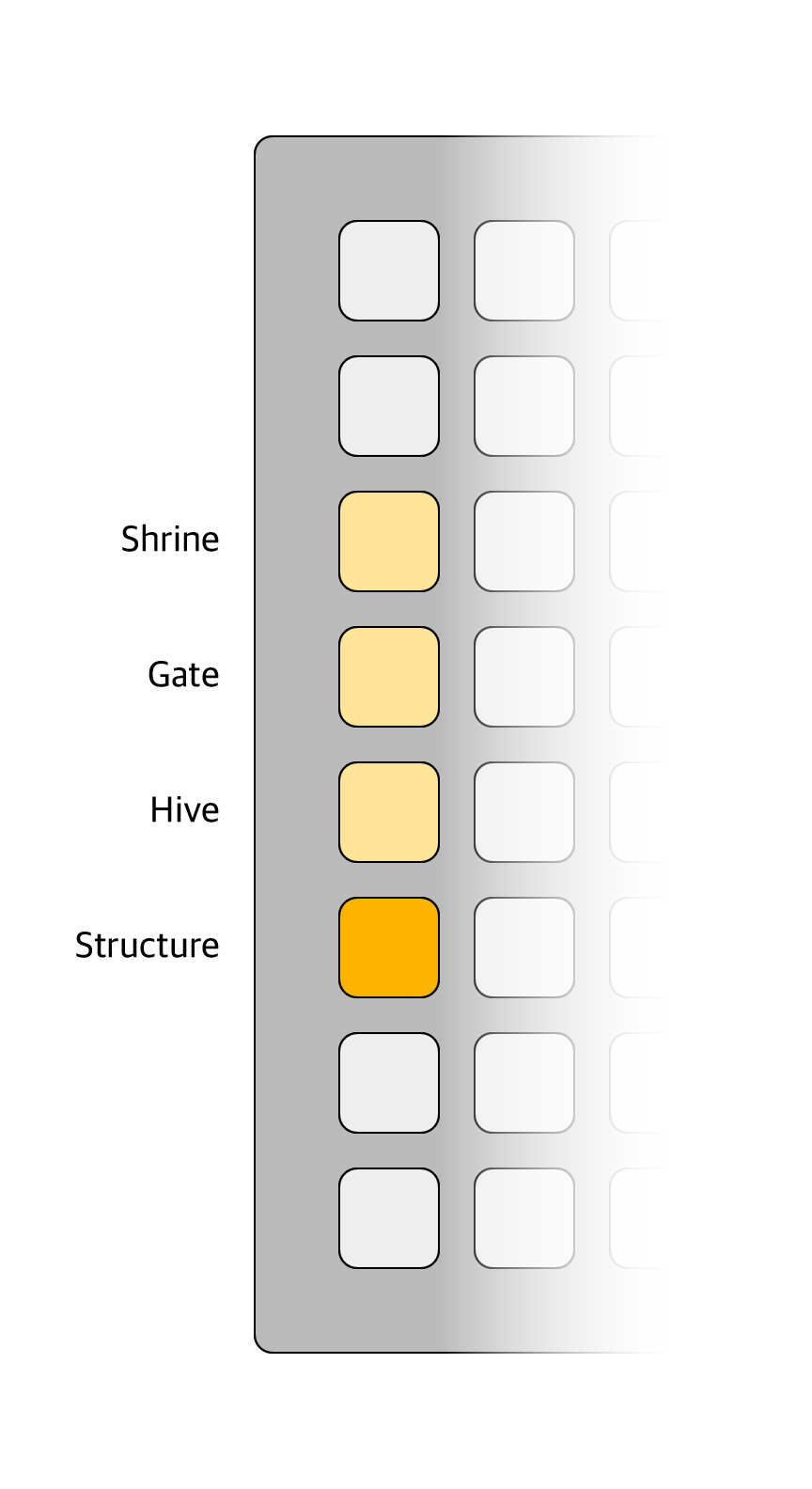
Metabolism
Hold the metabolism key plus a number. If a cell is selected, this will set the cell's metabolism. If no cell is selected, this will set the global metabolism. All newly created cells will default to this metabolism.
Release the metabolism key to return to the normal view.
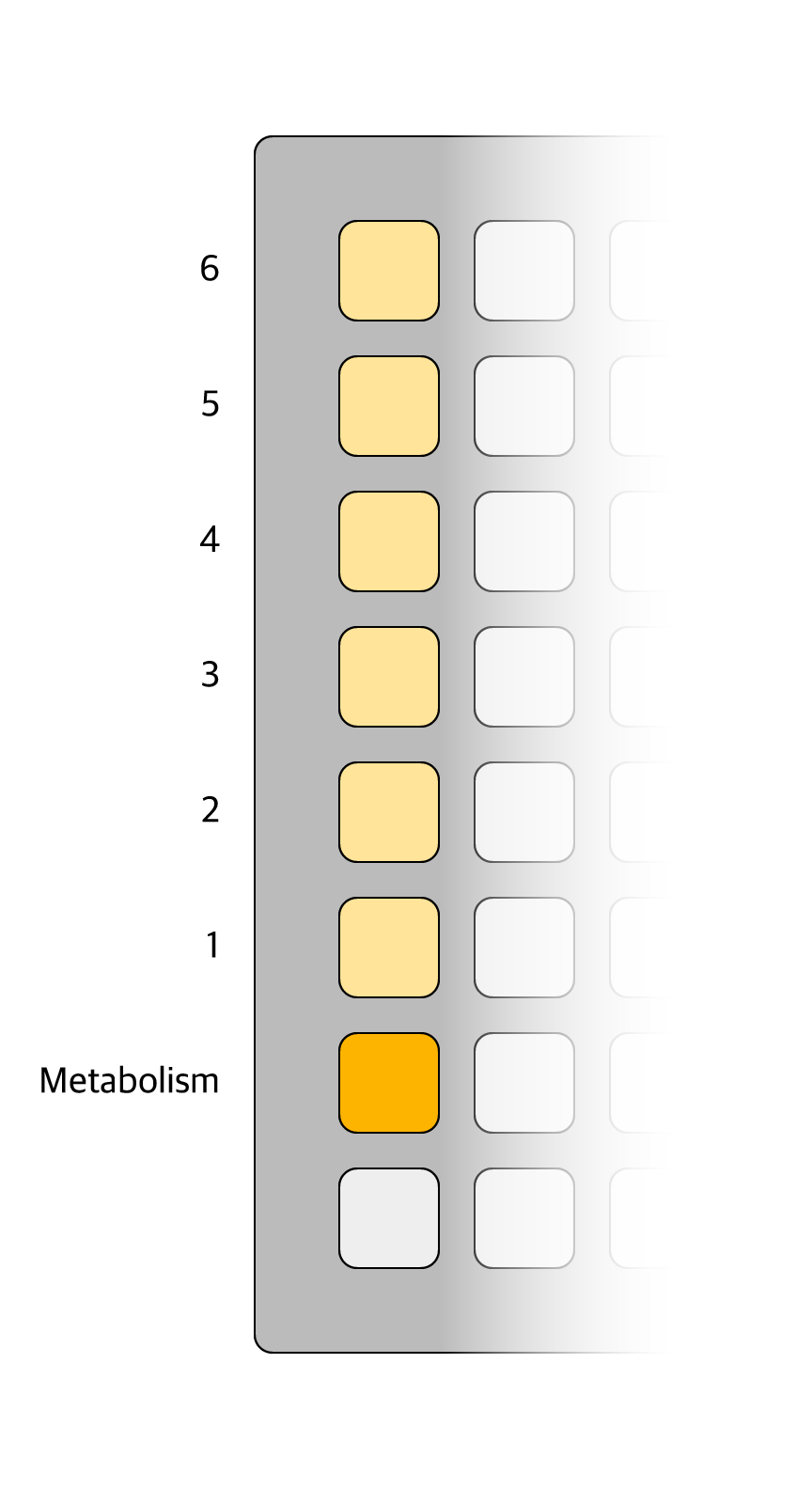
Delete
Hold the delete key and then press any active cell to delete it.

Delete All
Hold the arm and delete keys to initiate a countdown. When the countdown reaches zero, all cells and signals will be deleted.
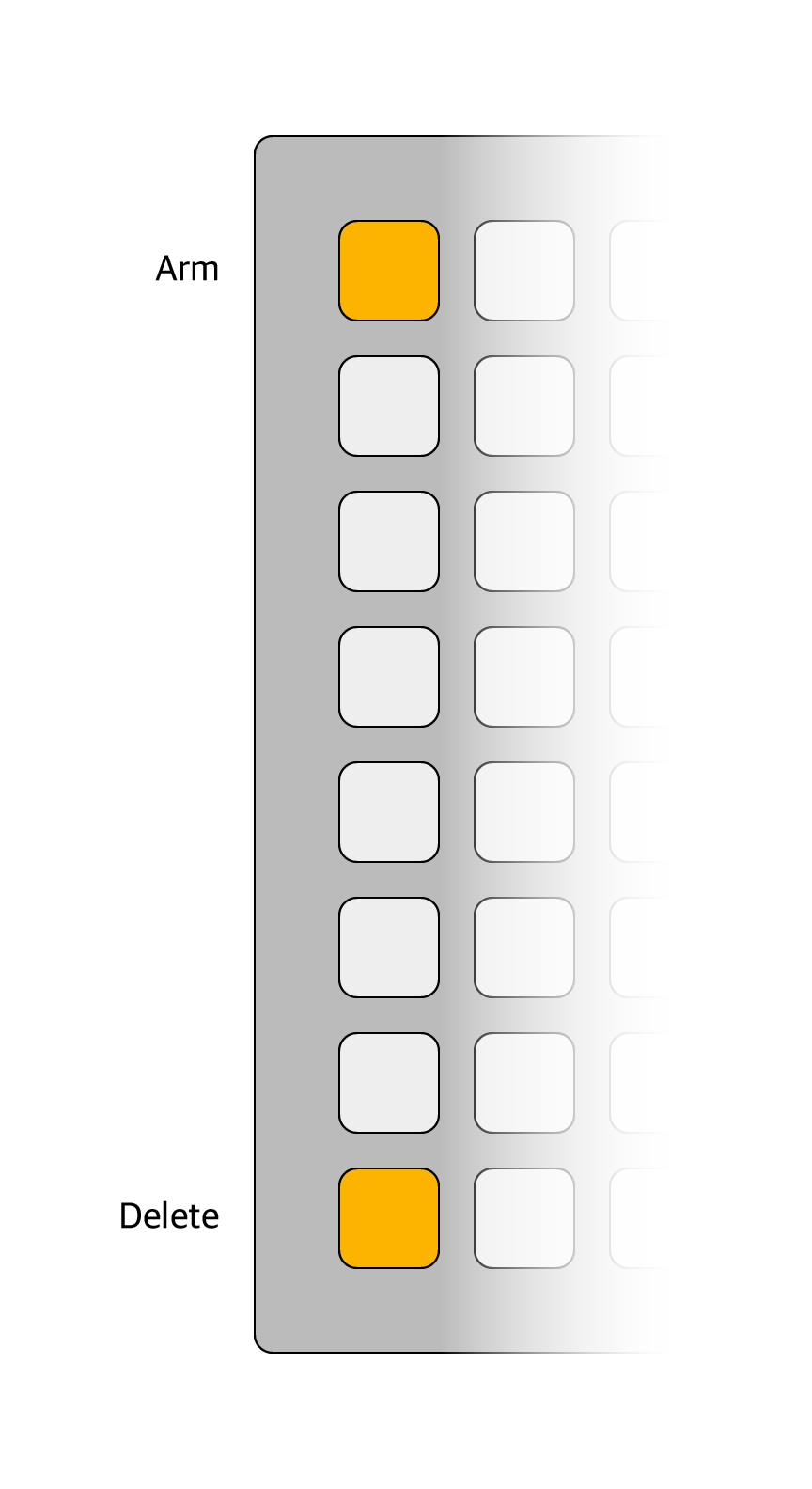
Importing & Exporting
arcologies can be saved and shared with others. Just click the export button and to save the .json file on your computer. Note that when you import, your current arcology will be destroyed. Importing and exporting causes playback to stop.
Philosophy
For monome grid and Ableton Live, arcologies is an M4L midi instrument that pairs especially well with drum racks and zoned instrument racks.
Inspired by tools like meadowphysics, Orca, and Sunvox. But also other curios like Dwarf Fortress, the tower defense genre, and the Eno / Chilvers suite of generative applications.
Also carbon-based life, water, the anthropocene, supply chains, The Mushroom at the End of the World, The Dark Mountain Project, Eco Futurism Corp, "seasteading", the gedankenexperiment-prompt: "sound artist's work in a William Gibson novel?", Conway's Game of Life, Garfield Park Conservatory, the Epcot Center, and Buckminster Fuller. And, of course, actual arcologies and the architectural movement known as metabolism.
arcologies is an instrument for exploration and discovery. At its core it is designed to be a deterministic compositional tool. Mastery of any medium depends on both familiarity and consistent response. This philosophy extends through all the code of arcologies. If a certain combination of events occur, the context that gave rise to their emergence ought to be reproducible with 100% accuracy. With a given configuration of cells, structures, and metabolisms, entire songs can emerge and be replayed note-for-note from a relatively simple set of rules.
arcologies is free, open source, licensed under a CC By 4.0 License.